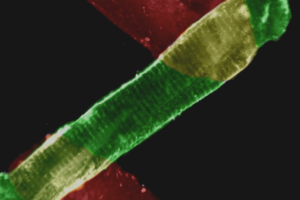Induction of heat shock response protects the heart against atrial fibrillation.
Brundel BJ, Shiroshita-Takeshita A, Qi X, Yeh YH, Chartier D, van Gelder IC, Henning RH, Kampinga HH, Nattel S
Abstract:
There is evidence suggesting that heat shock proteins (HSPs) may protect against clinical atrial fibrillation (AF). We evaluated the effect of HSP induction in an in vitro atrial cell line (HL-1) model of tachycardia remodeling and in tachypaced isolated canine atrial cardiomyocytes. We also evaluated the effect of HSP induction on in vivo AF promotion by atrial tachycardia-induced remodeling in dogs. Tachypacing (3 Hz) significantly and progressively reduced Ca(2+) transients and cell shortening of HL-1 myocytes over 4 hours. These reductions were prevented by HSP-inducing pretreatments: mild heat shock, geranylgeranylacetone (GGA), and transfection with human HSP27 or the phosphorylation-mimicking HSP27-DDD. However, treatment with HSP70 or the phosphorylation-deficient mutant HSP27-AAA failed to alter tachycardia-induced Ca(2+) transient and cell-shortening reductions, and downregulation (short interfering RNA) of HSP27 prevented GGA-mediated protection. Tachypacing (3 Hz) for 24 hours in vitro significantly reduced L-type Ca(2+) current and action potential duration in canine atrial cardiomyocytes; these effects were prevented when tachypacing was performed in cells exposed to GGA. In vivo treatment with GGA increased HSP expression and suppressed refractoriness abbreviation and AF promotion in dogs subjected to 1-week atrial tachycardia-induced remodeling. In conclusion, our findings indicate that (1) HSP induction protects against atrial tachycardia-induced remodeling, (2) the protective effect in HL-1 myocytes requires HSP27 induction and phosphorylation, and (3) the orally administered HSP inducer GGA protects against AF in a clinically relevant animal model. These findings advance our understanding of the biochemical determinants of AF and suggest the possibility that HSP induction may be an interesting novel approach to preventing clinical AF.






